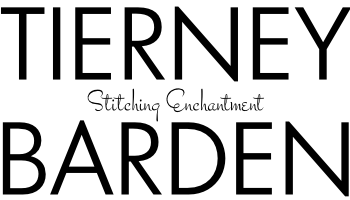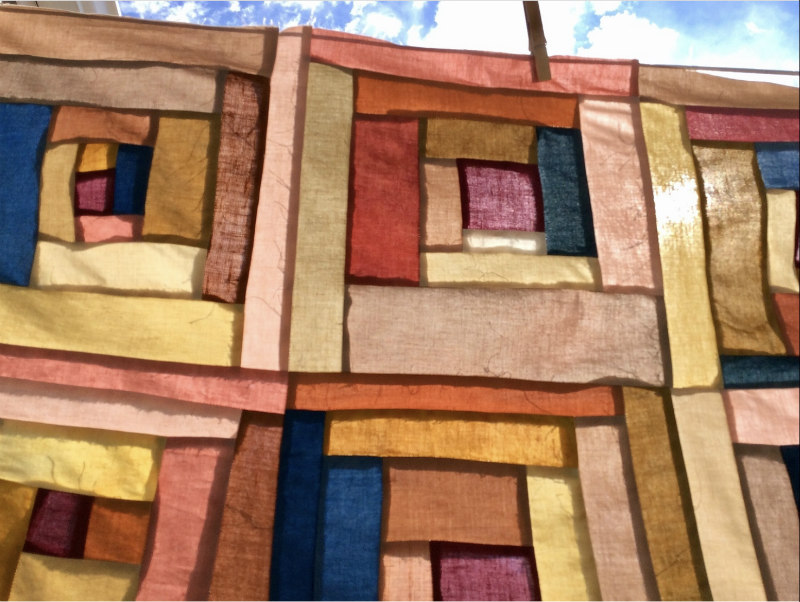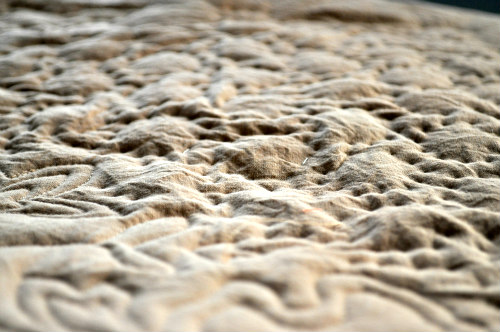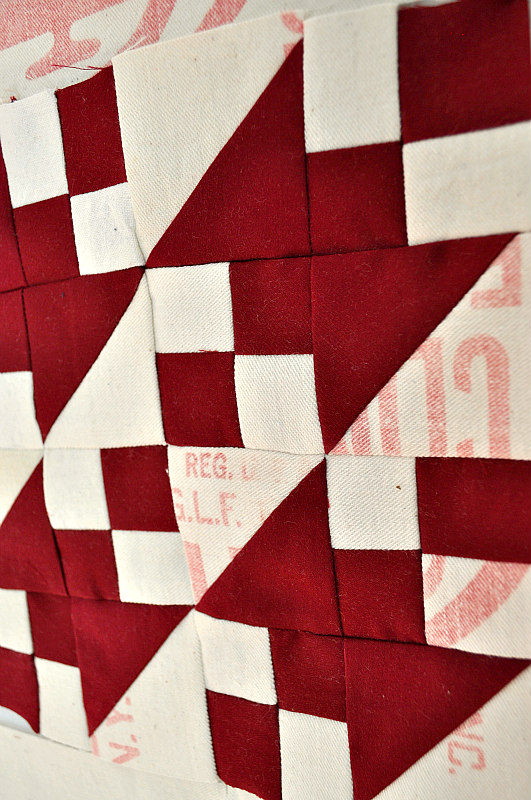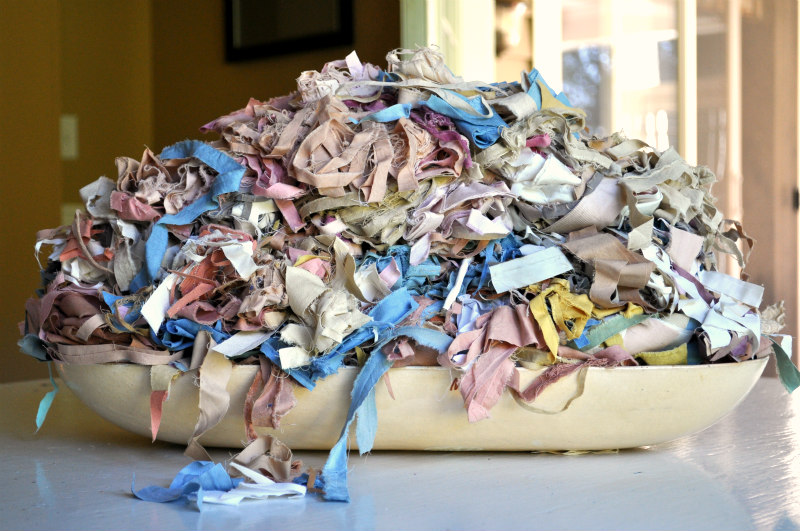“I am piecing natural dyed fabrics into log cabin blocks…. This block represents fabric dyed from Maine, Connecticut, New York and Colorado. My goal is to have this quilt pieced and hand quilt(ed) by the end of 2019. It will have so many great memories stitched into it….” - Ann Kreager
Last June, Ann and I met at Squam Art Workshops. Since then, we’ve kept in touch and I’ve enjoyed seeing this Colorado artist’s gift for all things sewn and knitted on her Instagram feed. What strikes me about Ann’s work is not only her attention to detail, but how she manages to infuse each and every thing she makes with meaning.
The special quilt featured here is no exception. Ann’s painterly mix of cheerful colors harmonize beautifully, and she has managed to create a quilt that is simultaneously modern and timeless. Ann finished her quilt with big stitch quilting in the ditch. See the photo below for a close up look.
How incredibly satisfying and heart warming it must feel to have created a quilt exclusively using hand dyed fabrics from dyers you know, including your own. As one of the dyers represented in the quilt, I feel Ann has stitched together not only meaningful pieces of fabric, but a powerful sense of community.
Ann inspires me, and I think anyone sleeping under this quilt is guaranteed sweet dreams!
Detail of Ann’s big stitch hand quilting.
“I love all the sweet friends I have made on this IG community. I am thankful for all the inspiration and support I have received from others. ”
I’m sending out a big thank you to Ann Kreager for allowing me to use her photos, and to share a peek into her quilting world with all of you. You can follow her on Instagram @hottamale1985.
If you’ve tried natural dyeing, like Ann has, you’ll have a very good idea about the amount of work and time that go into naturally dying fabric. When you share what you’re making with my fabrics, you give me such a sense of satisfaction about my dye work, and it’s what keeps me coming back season after season offering you my very best naturally dyed fabrics. “Artist Spotlight” is one way that I can celebrate YOU, and it will increasingly feature you and what you make using my naturally dyed fabrics, so be sure to share! #tierneybarden
As always, I love hearing from you in the comments below or @tierneybarden.
